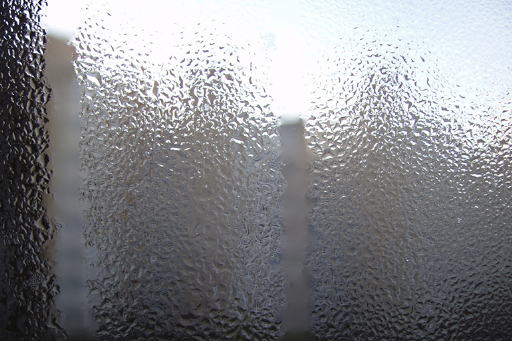Orkney Housing Association
Quality Affordable Homes for Orkney
Tel: (01856) 875253
Email: enquiries@ohal.org.uk
Tel: (01856) 875253
Email: enquiries@ohal.org.uk
18-11-2022 9:18

When people see damp patches on walls and ceilings of houses the first instinct may be to look for a leak. However, in newer properties the major cause of dampness is condensation. People generate moisture in their homes during normal household activities. This will vary with lifestyle – how many people are in the house and for how long during the day. From 4 to 14 litres of water a day (up to two buckets) can be produced in a normal household. About half of this is produced in the kitchen or bathroom. The other half is produced through the rest of the house.
The following are some suggestions around reducing the impact of condensation and associated mould.
Produce less moisture
Condensation is caused by excess moisture in the air hitting colder surfaces. In order to reduce the likelihood of it appearing, try to reduce moisture levels at home. When you cook, put a lid on pans and keep the kitchen well ventilated by using an extractor fan or keeping the window open. If windows are difficult to open please let us know.
Similarly, when you take a bath or shower, keep the room well ventilated to allow steaming air to escape through a window or vent. When filling the bath always put the cold water in first as this will reduce the amount of steam generated by up to 90%. To stop condensation forming, bathroom and kitchen windows should be opened, and extractor fans turned on.
Try to keep the bathroom and kitchen door shut as much as possible when these rooms are in use, so that moisture does not escape into other parts of your home.
Wet surfaces attract moisture, so wipe them down to get rid of the excess water. Dry off windows, shower screens and kitchen splashbacks to remove moisture when it forms.
Dry clothes outside
During the winter, it is tempting to dry wet clothes indoors on radiators but doing so creates higher moisture levels in the air, contributing to condensation. If you are drying clothes indoors please be sure to ventilate as much as possible. Try to hang your washing outdoors as much as possible during winter. If you use a tumble dryer to dry clothes, make sure that this is vented to the outside to allow moisture to escape.
Allow air to circulate
Allow air to circulate in parts of the home where it may otherwise remain stagnant. Regularly open cupboards, drawers, and wardrobes, for example, to give them an airing, and do not overfill them. Create a gap between furniture and walls to stop air from getting trapped and causing condensation to form.
Effective insulation
The Association will ensure that your home is properly insulated and draught-proofed and that it has an effective damp-proof course. Report any cracks or gaps in structures, and report any damage to gutters or roofing, sooner rather than later. If you think that your home does not have sufficient insulation please let us know so that we can check.
Adequate heating
Adequately heating your home can help to reduce condensation and damp, so keep temperature levels consistent, especially in those rooms that you may not use often, as condensation will occur in the coldest areas of the home. Avoid using calor gas or other fuel burning heaters in your home as these may create additional moisture.
Home ventilation
Keep window trickle vents open as much as possible to allow air to circulate and moisture to escape. Also use extractor fans provided in kitchens and bathrooms. We may consider other home ventilation systems if damp or condensation is a particular problem. As homes become increasingly airtight and less draughty the need to ventilate is becoming more important in order to reduce condensation and mould, which will protect our health. For this reason, if your home has a built-in ventilation system you should keep it running and not switch it off.
Removing mould
An effective way of killing mould is by use of a solution of bleach and water. Mix up a solution of two parts bleach with ten parts water in a spray bottle (an empty cleaning spray bottle will do) and spray the bleach water onto the walls to kill the mould. Leave for ten minutes and wipe away with a damp cloth.
If you prefer not to use bleach, combine a teaspoon of bicarbonate of soda with water in a spray bottle and shake until it has dissolved. Spray it directly onto the mould and leave for a few minutes. Use a scrubbing brush or sponge to remove the mould, then wipe the solution off with water. Spray the solution on the area again and let it dry.
NB: If using a purchased mould remover always follow the manufacturer’s instructions and consider wearing a face mask when spraying. Be sure to always stand on a secure platform, for example a step ladder, when working at height, understand your own limitations and seek assistance if needed.
Decoration
When decorating bathrooms and kitchens use specialist emulsion paints specifically designed for bathrooms and kitchens, which helps to reduce the growth of mould.